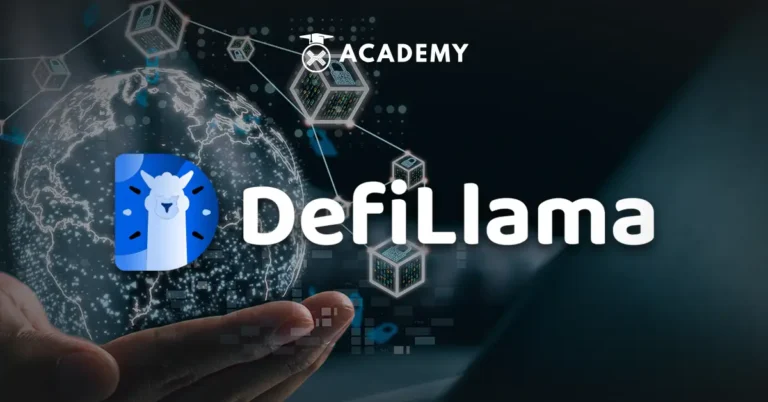In regulating a country’s economy, the government needs tools or instruments of economic policy, one of which is monetary policy.
Monetary policy is a policy implemented by the central bank to regulate the money supply to achieve certain goals.
Meanwhile, the goals or objectives of monetary policy are to achieve and maintain price stability, encourage sustainable economic growth, and maintain financial system stability.
Now, to better understand what monetary policy is, starting from the definition, instruments, examples, and the effect of this policy on investment, see the full review below.
What is Monetary Policy?
Quoting katadata.co.id/, monetary policy, as explained by bi.go.id, aims to achieve and maintain the stability of a country’s currency value.
This currency stability covers two main aspects. First, the stability of the prices of goods and services is reflected through controlling the inflation rate. Meanwhile, the second aspect relates to the stability of the exchange rate of the country’s currency against foreign currencies.
In Indonesia, monetary policy objectives are stated in Law No. 23/1999 on Bank Indonesia, which has been amended through Law No. 3/2004 and Law No. 6/2009.
It should be noted that monetary and fiscal policies, although equated by some, are different regarding implementation and objectives.
Fiscal policy focuses more on Indonesia’s economic stability by emphasizing state revenues and expenditures, including the State Budget (APBN), taxes, and other state revenues.
On the other hand, the central bank implements monetary policy to support economic activity, involving instruments such as discounting, bank interest rates, and so on.
Definition of Monetary Policy According to Experts

Quoting gramedia.com/, among the various definitions presented by experts, the following is an understanding of monetary policy, namely:
- Muana Nanga explains that monetary policy is the measures taken by monetary authorities to regulate the amount of money in circulation and interest rates to influence aggregate demand and reduce economic instability.
- According to Boediono Monetary, monetary policy refers to government actions through the Central Bank to influence macroeconomic conditions. These actions include efforts to balance the amount of money in circulation with the supply of goods so that inflation can be controlled, full employment opportunities are achieved, and the smooth distribution of goods can be realized.
- M. Natsir explains that monetary policy refers to all the central bank’s actions or efforts to influence the development of monetary variables, such as money supply, exchange rates, interest rates, and lending rates, to achieve the desired goals.
- Meanwhile, according to Perry Warjiyo, monetary policy is a policy of the monetary authority or central bank that involves monetary aggregates to achieve the development of economic activity. This approach is carried out by considering the cycle of economic activity, the economic characteristics of a country, and other fundamental economic factors.
Types of Monetary Policy
There are 2 (two) types of monetary policy that can be implemented to influence the amount of money in circulation, namely expansionary monetary policy and contractionary monetary policy. The following is an explanation of the two types of policies:
1. Expansionary Monetary Policy
Expansionary Monetary Policy, often called easy money policy, refers to regulating the amount of money circulating in the economy.
The approach involves lowering interest rates, central bank purchases of government securities, and lowering reserve requirements for banks.
Expansionary policies aim to lower unemployment and stimulate business activity and consumer spending.
At the national level, the objective of expansionary monetary policy is to increase economic growth, albeit at the potential risk of higher inflation.
This policy, known as monetary expansive policy, focuses on increasing the amount of money circulating in society to accelerate the economy.
The effects include an increase in people’s purchasing power and a decrease in the unemployment rate during economic recession or depression. In addition, expansionary monetary policy also has an influence on the unemployment rate in a country.
For example, an expansionary policy can be implemented to reduce the unemployment rate by providing more money, which will stimulate business activities and expand the labor market.
Using fiscal authority, the central bank can also control the exchange rate of the domestic currency (Rupiah) against foreign currencies.
As a concrete example, Bank Indonesia can increase the money supply by printing more money to make the rupiah more affordable than other countries’ currencies.
2. Contractionary Monetary Policy
Contractionary Monetary Policy, also known as tight money policy, is a measure to reduce the amount of money in circulation, especially when the economy is facing inflationary pressures.
The main objective of this policy is to stabilize the inflation rate by reducing the amount of money in circulation in the economy. This can be done by increasing interest rates, selling government bonds, and increasing bank reserve requirements.
Examples of Monetary Policy implementation in Indonesia include actions such as certificate auctions by Bank Indonesia (BI) or purchasing securities in the capital market.
BI may reduce interest rates if economic conditions align with expectations, while conversely, BI may raise interest rates to limit economic activity and reduce money flow.
When the economy is in recession, money circulation tends to increase to stimulate economic activity. For example, BI may purchase securities.
However, in times of rising inflation, BI will take steps to reduce the flow of money to the public by selling securities to control excessive economic activity.
5 Monetary Policy Instruments
Quoting ocbc.id, as is commonly known, monetary policy is an economic approach that focuses on controlling money circulation and economic development.
Unemployment and inflation rates are often considered the main indicators in measuring macroeconomic variables. However, not only are these two factors of concern, there are also other monetary policy instruments, including:
1. Discount Rate
Discounting policy is one of the monetary policy instruments measured through bank interest rates. The interest rate applied by Bank Indonesia in lending transactions between commercial banks and the central bank can affect the regular circulation of money.
Bank Indonesia can lower the lending rate if the goal is to increase money circulation. Conversely, bank lending rates can be increased if money circulation needs to be reduced.
2. Open Market Operation
Open market operations become an instrument of monetary policy when the government manages money circulation through the sale or purchase of securities owned by the government.
The government will sell securities if Bank Indonesia intends to reduce money circulation. Conversely, the government will buy securities if the money supply needs to be increased.
This instrument allows the government to control the money flow to achieve its desired monetary policy objectives.
3. Mandatory Reserve Ratio Policy
The next monetary policy instrument is the statutory reserve ratio. When Bank Indonesia wishes to reduce bank cash reserves, money will circulate in the community through lending.
Conversely, if bank cash reserves need to be increased, money circulating in the community will be withdrawn by raising savings interest rates.
4. Interest Rate Determination Benchmark
In achieving monetary policy objectives, Bank Indonesia can control money circulation by setting interest rates.
The interest rate set by Bank Indonesia will become a reference for commercial banks throughout Indonesia in carrying out their activities. Thus, the benchmark interest rate is one of the important monetary policy instruments.
5. Moral Appeal
The last monetary policy instrument is moral suasion. In this case, Bank Indonesia, as the central bank, appeals to all commercial banks to implement a policy of reducing or increasing lending rates.
Monetary Policy Objectives

Quoting ocbc.id page by the provisions stated in Law No. 3 of 2004 concerning Bank Indonesia’s Monetary Policy, the main objective of monetary policy is to maintain the stability of the rupiah.
To achieve this goal, many factors influence the decision-making process in Bank Indonesia’s monetary policy. The following are the various objectives of monetary policy, among others:
1. Ensuring Economic Stability
A country’s economic growth needs to occur in a controlled and sustainable manner, which can be achieved by balancing the flow of goods/services and money circulation.
Therefore, monetary policy aims to maintain economic stability through regulating and determining the circulation of money in society.
2. Controlling Inflation
For inflation to be suppressed, Bank Indonesia sets policies to reduce the amount of money circulating in society and maintain the availability of money in banks.
Thus, one of monetary policy objectives is to control the inflation rate.
3. Increase Employment
Furthermore, Bank Indonesia aims to increase employment through monetary policy. Stability in money circulation stimulates increased production activity. With increased production activities, the need for human resources also increases.
Therefore, this policy can create jobs by absorbing labor.
4. Protecting the Stability of Goods Prices in the Market
The objective of monetary policy is to protect market price stability. Maintaining price stability can build public confidence in current and future price levels so that purchasing power between periods remains consistent.
Price stability can be achieved through the balance of money circulation, demand for goods, and production.
5. Maintain Balance of International Balance of Payments
Monetary policy affects not only domestic economic activity but also international aspects. In addition, maintaining the balance of the international balance of payments is also one of the main objectives of monetary policy.
This is done by ensuring a balance between the amount of goods exported and imported. Therefore, governments often take measures such as devaluation in this context.
6. Driving Economic Growth
The overall impact of monetary policy is directed at promoting economic growth. To achieve this goal, it is necessary to achieve success in various sectors, such as the availability of employment, control of the inflation rate, increased production activity, and demand for goods, as well as other factors.
5 Examples of Monetary Policy in Indonesia
Quoting katadata.co.id/agung/ekonopedia/635901ce1f1e0/memahami-pengertian-instrumen-dan-contoh-kebijakan-moneter, monetary policy in Indonesia has an important impact on various regulations.
The following are some examples of monetary policies implemented by Bank Indonesia (BI) to maintain economic stability in Indonesia, among others:
1. Raising or Lowering the Interest Rate
Adjusting interest rates is one example of monetary policy implemented by the central bank. In Indonesia, for example, during the Bank Indonesia Board of Governors Meeting (RDG-BI) on October 19-20, 2022, it was decided to raise the BI 7-Day Reverse Repo Rate (BI7DRR) by 50 basis points (bps) to 4.75%.
In addition, Bank Indonesia also raised the deposit facility rate by 50 bps to 4.00% and the lending facility rate by 50 bps to 5.50%. The interest rate hike was taken as a front-loaded, pre-emptive, and forward-looking measure to ease inflation expectations that were too high a level.
The move aims to ensure that core inflation will return to within the target range of 3.0±1% earlier, i.e., in the first half of 2023, while strengthening the Rupiah exchange rate stabilization policy.
2. Easing LTV Ratio
One example of monetary policy implemented by Bank Indonesia (BI) is easing the Loan to Value (LTV) ratio. This measure was taken to encourage credit growth in the property sector.
For example, in 2022, BI decided to continue easing the LTV ratio for property loans/financing to a maximum of 100%, applicable to all property types, provided that the bank meets certain non-performing loan (NPL) criteria.
3. Easing Down Payment Requirements for Motor Vehicle Loans
Another example of monetary policy implemented by Bank Indonesia (BI) is easing down payment requirements for motor vehicle loans. This move was taken to encourage credit growth in the automotive sector.
4. Purchase and Sale of Government Securities
The purchase and sale of Government Securities (SBN) is one example of monetary policy implemented by Bank Indonesia (BI). Purchasing SBN in the secondary market is done by BI as part of its participation in financing the State Budget (APBN).
Meanwhile, the sale of SBN is done to reduce liquidity and credit demand, thus contributing to suppressing the inflation rate. With the addition of SBN in the secondary market from BI, financial institutions, both banks and non-banking financing institutions, can purchase the SBN.
2022, for example, as of October 19, BI purchased IDR138,080,000,000,000 of government securities in the primary market.
The purchase of SBN in the primary market aligns with the national economic recovery program and the financing of health and humanitarian handling in the context of handling the impact of the COVID-19 pandemic.
5. Raising or Lowering the Statutory Reserves
Another example of monetary policy implemented by Bank Indonesia (BI) is an adjustment to the reserve requirement (GWM) level.
GWM refers to the minimum funds or deposits that must be maintained by banks in the form of current account balances placed at Bank Indonesia.
BI sets the GWM amount based on a percentage of third-party funds banks collect. The reserve requirement acts as a macroprudential instrument to regulate the amount of money circulating in society, directly affecting the inflation index.
How Can Monetary Policy Affect General and Crypto Investments?
Quoting dbs.id/id, monetary policy can impact a country’s economic growth rate, employment, inflation, and currency exchange rate.
If the economy is in decline, then a country’s central bank will attempt to increase production, employment, and consumer demand by reducing interest rates.
The action aims to reduce the cost of credit and potentially increase the amount of money in circulation.
Conversely, when there is uncontrolled inflation, policymakers will seek to control demand with moderation measures to restore economic and financial stability.
In addition, monetary policy also greatly influences crypto asset investment. Quoting medcom.id/, in the first half of 2023, for example, the crypto asset with the largest market capitalization, Bitcoin (BTC), experienced an 80% increase, from IDR 240,000,000 to IDR 481,000,000.
Based on Market Cap data, the value of Bitcoin also increased by 50% in the first half of 2023. In fact, at its peak, the Bitcoin price at INDODAX reached Rp470,910,000 per coin.
According to the CEO of INDODAX, Oscar Darmawan, at the time, the increase in Bitcoin price was triggered by increased investor optimism about the monetary policy of the US Central Bank, the Fed.
Difference between Monetary and Fiscal Policy
Quoting umsu.ac.id, the main difference between monetary and fiscal policy lies in the actors and how they affect the economy.
The central bank runs monetary policy, while the government implements fiscal policy.
Monetary policy focuses more on regulating the money supply and interest rates, while fiscal policy focuses more on government budget and tax system aspects.
Conclusion
To conclude, monetary policy is important in regulating a country’s economy. Central banks can form the foundation of economic stability by focusing on controlling the money supply and interest rates.
On the other hand, the impact of monetary policy is felt by the main economic actors and society as a whole.
Successful monetary policy can positively impact economic growth, employment, and price stability, while failure in its implementation can pose the risk of inflation or recession.
Therefore, evaluating the impact of monetary policy on society is important in assessing the effectiveness of this policy. The effect on purchasing power, lending rates, and public investment can be important indicators.
Regarding investment, the prospects of monetary policy are an important consideration for investors. Anticipation of changes in interest rates, credit policies, and economic stability is also highly considered in making investment decisions.
Well, now you understand what monetary policy is, starting from the definition, instruments, examples, and the effect of this policy on investment. Furthermore, you can also read other interesting articles, such as fiscal policy and sidra bank, only on INDODAX Academy.
To improve your understanding of blockchain technology, you are advised to explore the latest articles on INDODAX Academy.
INDODAX Academy presents a variety of materials covering basic concepts to more complex aspects related to blockchain technology.
By reading the various articles available on INDODAX Academy, you can gain a deeper understanding of this technology, including its application in various contexts, and get the latest crypto world updates.
So, let’s continue to increase knowledge about blockchain and crypto assets with INDODAX Academy!








